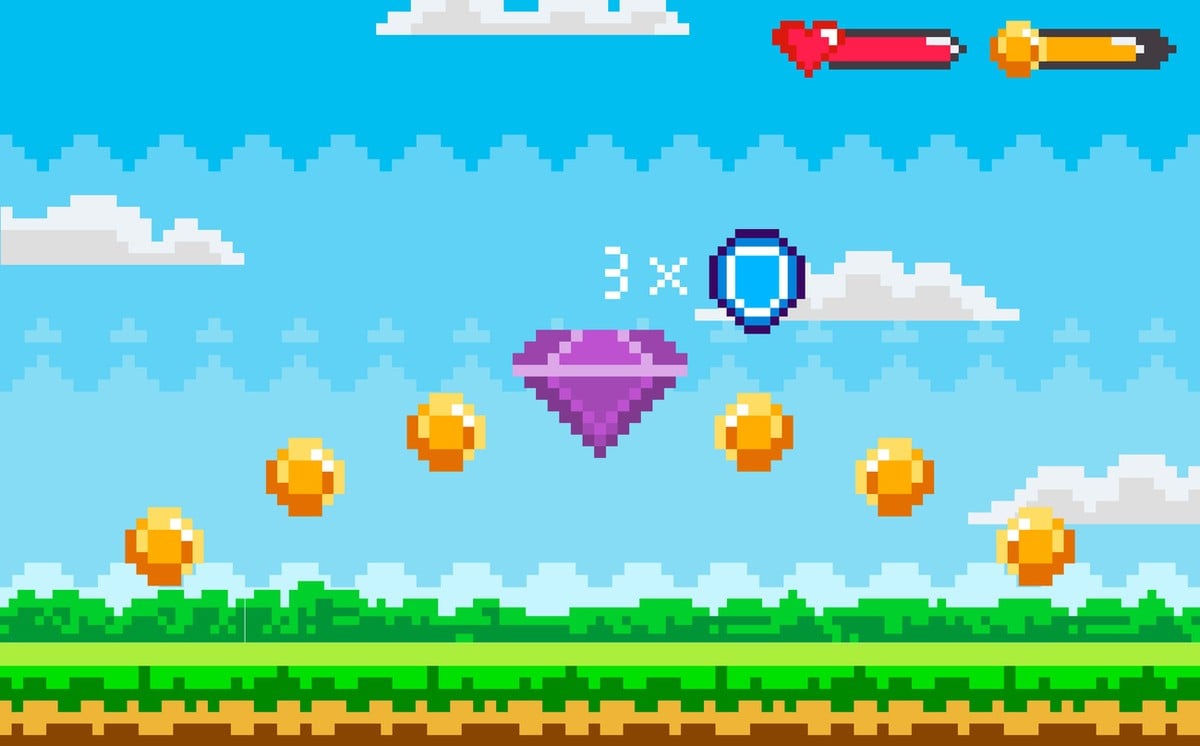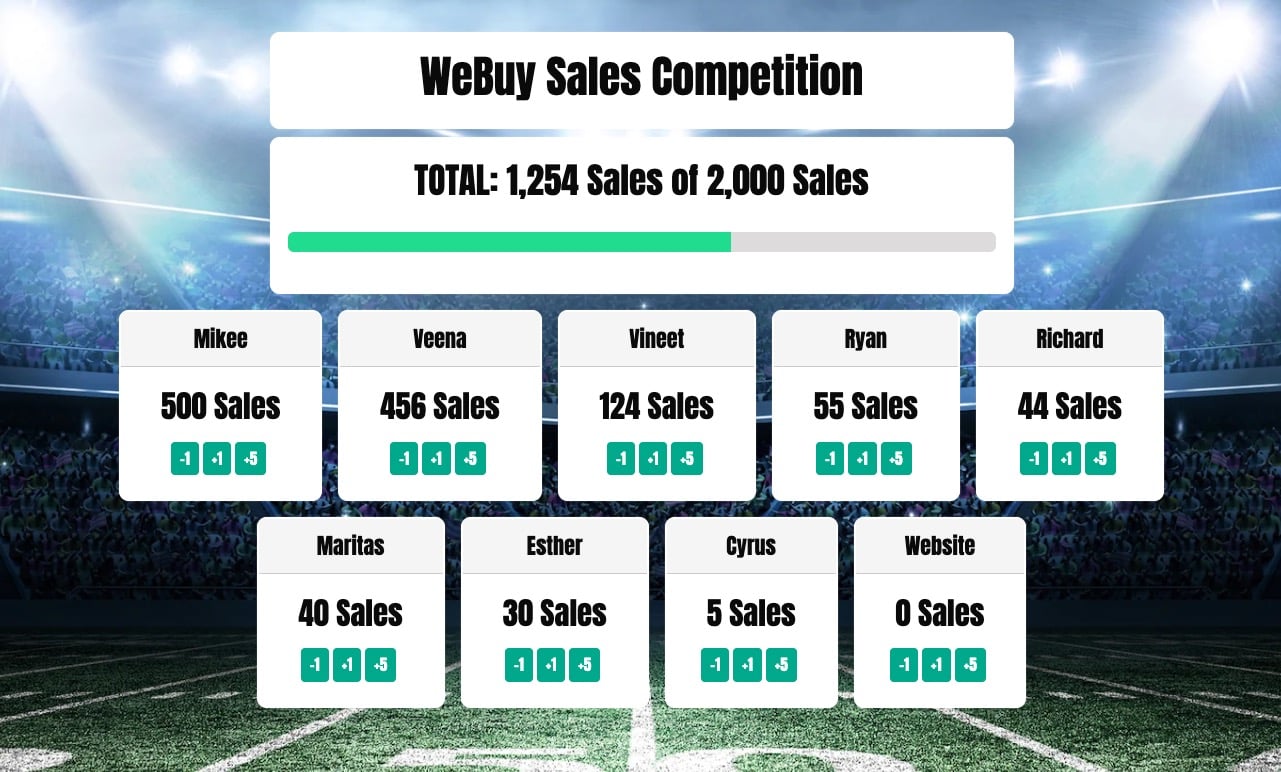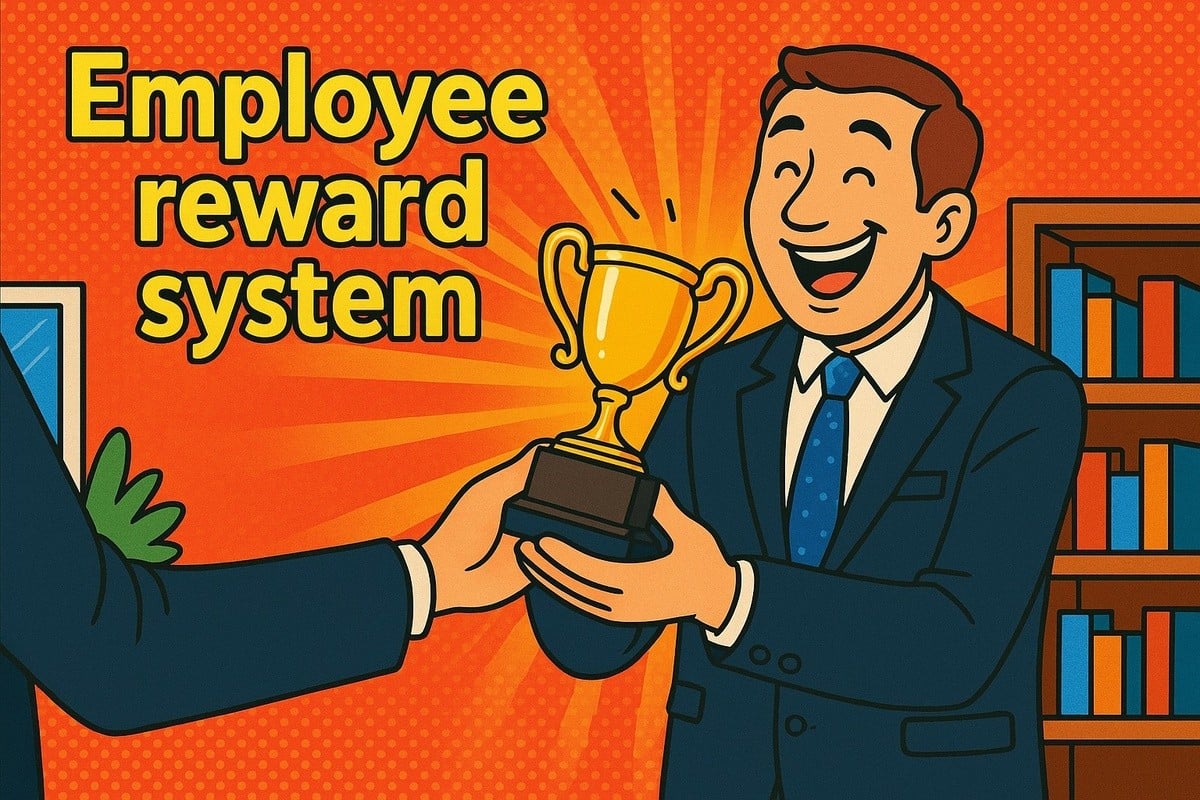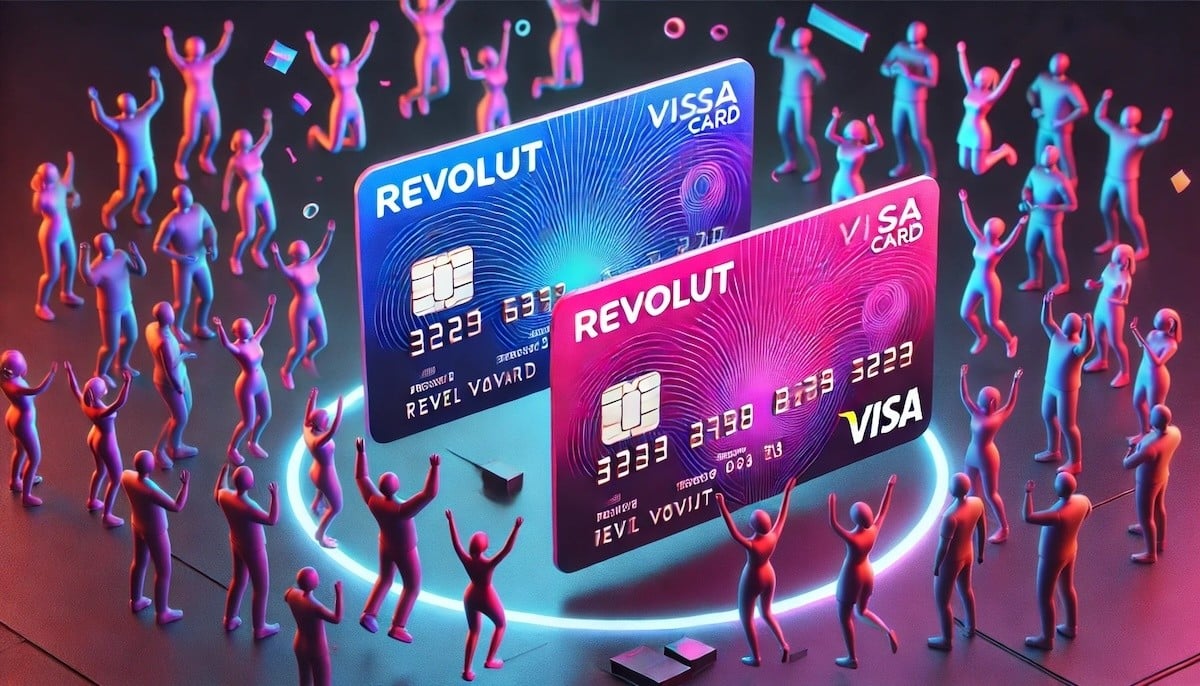
Sales teams struggle with maintaining consistent motivation and engagement. Traditional performance tracking through spreadsheets or complex CRM dashboards often fails to inspire the competitive spirit that drives sales success. The solution? Gamification—turning work metrics into engaging, visible competitions that salespeople actually want to participate in.
This guide shows you how to implement effective sales gamification without the complexity or expense of enterprise software solutions.
Understanding Gamification in Sales Contexts
Gamification means applying game-like elements to non-game environments to boost motivation and performance. It works particularly well in sales because the profession is inherently competitive and numbers-driven. Salespeople naturally want to know where they stand relative to their peers, making gamification a perfect fit for this environment.
Common gamification elements include:
- Points systems: Awarding points for specific activities or achievements
- Levels or tiers: Creating progression paths based on cumulative performance
- Missions and challenges: Setting specific, time-bound goals with clear rewards
- Badges and achievements: Providing visible recognition for one-time accomplishments
- Leaderboards: Displaying ranked performance comparisons
- Unlockable content: Granting access to new features or privileges based on performance
- Activity feeds: Showing real-time updates of team accomplishments
- Notifications: Sending alerts to maintain engagement
- Competitive quizzes: Testing product knowledge in game formats
- Progress indicators: Visualizing advancement toward goals
While this list might seem overwhelming, successful gamification doesn't require implementing everything at once. In fact, trying to do too much initially often leads to confusion and abandonment.

The Incremental Approach: Start Simple, Scale Smart
Successful gamification follows an iterative process. Start with one simple element, measure its impact, and expand based on what works. This approach minimizes risk, reduces implementation complexity, and allows you to learn what motivates your specific team.
The ideal starting point is a sales team leaderboard. Leaderboards provide immediate visibility, require minimal setup, and deliver tangible results quickly. Unlike complex gamification platforms that demand user accounts, system integrations, and extensive configuration, a simple leaderboard can be operational within minutes.
Your initial implementation needs just two components:
- One person responsible for updating scores (this takes minutes per day)
- A display method visible to the team (screen, shared link, or regular email updates)
Avoid over-engineering at this stage. Manual data entry beats complex integrations when you're testing whether gamification works for your team. You can always automate later once you've proven the value.
Choosing the Right Metrics for Your Sales Leaderboard
The metric you track determines your gamification success. Different businesses and team structures require different approaches, but effective metrics share common characteristics.
Consider tracking metrics such as:
- New customer acquisitions: Raw count of new accounts closed
- Business account wins: Focus on enterprise or high-value clients
- Expansion revenue (MRR): Growth from existing customer upsells
- Onboarding completion: Post-sale customer success activities
- Sales cycle velocity: Average time from lead to close
Start with a single metric to maintain focus and clarity. Multiple metrics can dilute impact and create confusion about priorities.
Three Essential Criteria for Effective Sales Metrics
Your chosen metric must meet these non-negotiable requirements:
1. Individual accountability: The metric must be measurable per sales representative. While team metrics have value for other purposes, leaderboards work by showing individual performance comparisons.
2. Direct influence: Sales reps must have significant control over the metric. If external factors dominate results, the leaderboard becomes demotivating rather than inspiring.
3. Easy measurement: Data collection should take minutes, not hours. If updating the leaderboard becomes a burden, it won't happen consistently, destroying the gamification effect.
Implementing Your Sales Gamification System
Ready to create your sales leaderboard? Keepthescore.com provides a straightforward solution designed specifically for this purpose. The platform offers extensive customization options while maintaining the simplicity crucial for quick implementation.
 An online leaderboard from Keepthescore.com
An online leaderboard from Keepthescore.com
Follow these steps to get started:
- Click the button above to begin creating your leaderboard
- Select your preferred leaderboard type from the available options
- Enter each team member's name or identifier
- Click "Create your leaderboard" to generate your board
- Navigate to SETTINGS > Scores
- Customize your Score suffix to match your metric (e.g., "Sales", "Deals", "Points")
- Share the leaderboard link with your team or display it on a visible screen
The entire process takes less than five minutes, and you'll have a professional-looking leaderboard ready for immediate use.
Beyond Basic Leaderboards: Expanding Your Gamification
Once your initial leaderboard proves successful, consider these enhancements:
Time-based competitions: Run weekly or monthly contests with specific themes or focus areas. This prevents the same top performers from dominating indefinitely.
Team-based challenges: Create group competitions that encourage collaboration while maintaining competitive elements.
Activity-based scoring: Award points for activities that lead to sales, not just closed deals. This keeps newer reps engaged while they build their pipeline.
Recognition systems: Implement a basic employee points system that acknowledges various contributions beyond pure sales numbers.
Measuring Success and Iterating
Track these indicators to evaluate your gamification effectiveness:
- Participation rates: Are team members actively checking and discussing the leaderboard?
- Performance improvements: Have key metrics improved since implementation?
- Engagement feedback: What do team members say about the system?
- Sustained interest: Does engagement remain high after the initial novelty?
Use this data to refine your approach. Add complexity only when simpler methods plateau. Remember that the best gamification system is one that your team actually uses, not the one with the most features.
Common Pitfalls to Avoid
Learn from others' mistakes by avoiding these common gamification failures:
- Starting too complex: Begin with one element and expand gradually
- Ignoring team feedback: Your team's input is crucial for sustained engagement
- Focusing only on top performers: Ensure your system motivates all performance levels
- Neglecting updates: Stale data kills engagement faster than anything else
- Making it mandatory: Forced participation breeds resentment, not motivation
Moving Forward with Sales Gamification
Sales gamification doesn't require expensive software or complex implementations. Start with a simple leaderboard, choose the right metric, and maintain consistent updates. As you see results, expand thoughtfully based on what works for your specific team and culture.
The key is starting today rather than planning the perfect system. Your first leaderboard won't be perfect, but it will teach you what motivates your team. Use those lessons to build a gamification system that drives real results while keeping your sales team engaged and competitive.








